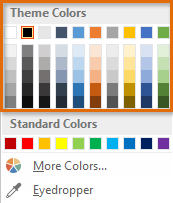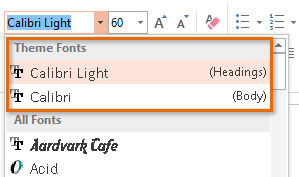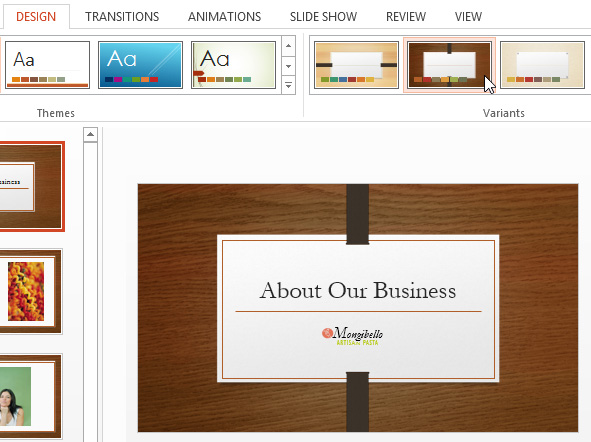PowerPoint 2013 -
Applying Themes

PowerPoint 2013
Applying Themes


/en/powerpoint2013/text-basics/content/
A theme is a predefined combination of colors, fonts, and effects. Different themes also use different slide layouts. You've already been using a theme, even if you didn't know it: the default Office theme. You can choose from a variety of new themes at any time, giving your entire presentation a consistent, professional look.
Optional: Download our practice presentation.
Every PowerPoint theme—including the default Office theme—has its own theme elements. Those elements are:
 Theme Colors
Theme Colors Theme Fonts
Theme Fonts Theme Effects
Theme EffectsIf you're using a theme, you'll probably find that your presentation looks pretty good. All of the colors will work well together, which means you won't have to spend as much time formatting your presentation. But there's another great reason to use theme elements: When you switch to a different theme, all of these elements will update to reflect the new theme. You can drastically change the look of your presentation in a few clicks.
 The Wisp theme and the Integral theme
The Wisp theme and the Integral themeIn our examples above, you can see the effect of applying different themes to the same slide—each theme uses its own fonts and colors. But you may have also noticed that the font and colors of the logo in the bottom-right remained unchanged: This is because they're Standard Colors and Fonts rather than theme elements. Colors and fonts will only update if you're using Theme Fonts or Theme Colors.
As you can see from the two different Title Slides above, themes can also change various slide layouts. Some themes, like the Wisp theme in the example below, even include additional layouts.
 Wisp theme slide layouts and Integral theme slide layouts
Wisp theme slide layouts and Integral theme slide layoutsIf you use a unique slide layout—such as Quote with Caption or Name Card—and then switch to a theme that does not include that layout, it may give unexpected results.
All themes included in PowerPoint are located in the Themes group on the Design tab. Themes can be applied or changed at any time.
 Clicking the More drop-down arrow
Clicking the More drop-down arrow Selecting a theme
Selecting a theme The applied theme
The applied themeOnce you've applied a theme, you can also select a variant for that theme from the Variants group. Variants use different theme colors while preserving a theme's overall look. Some variants also use different textures, as in the example below.
 Applying a theme variant
Applying a theme variant
/en/powerpoint2013/applying-transitions/content/